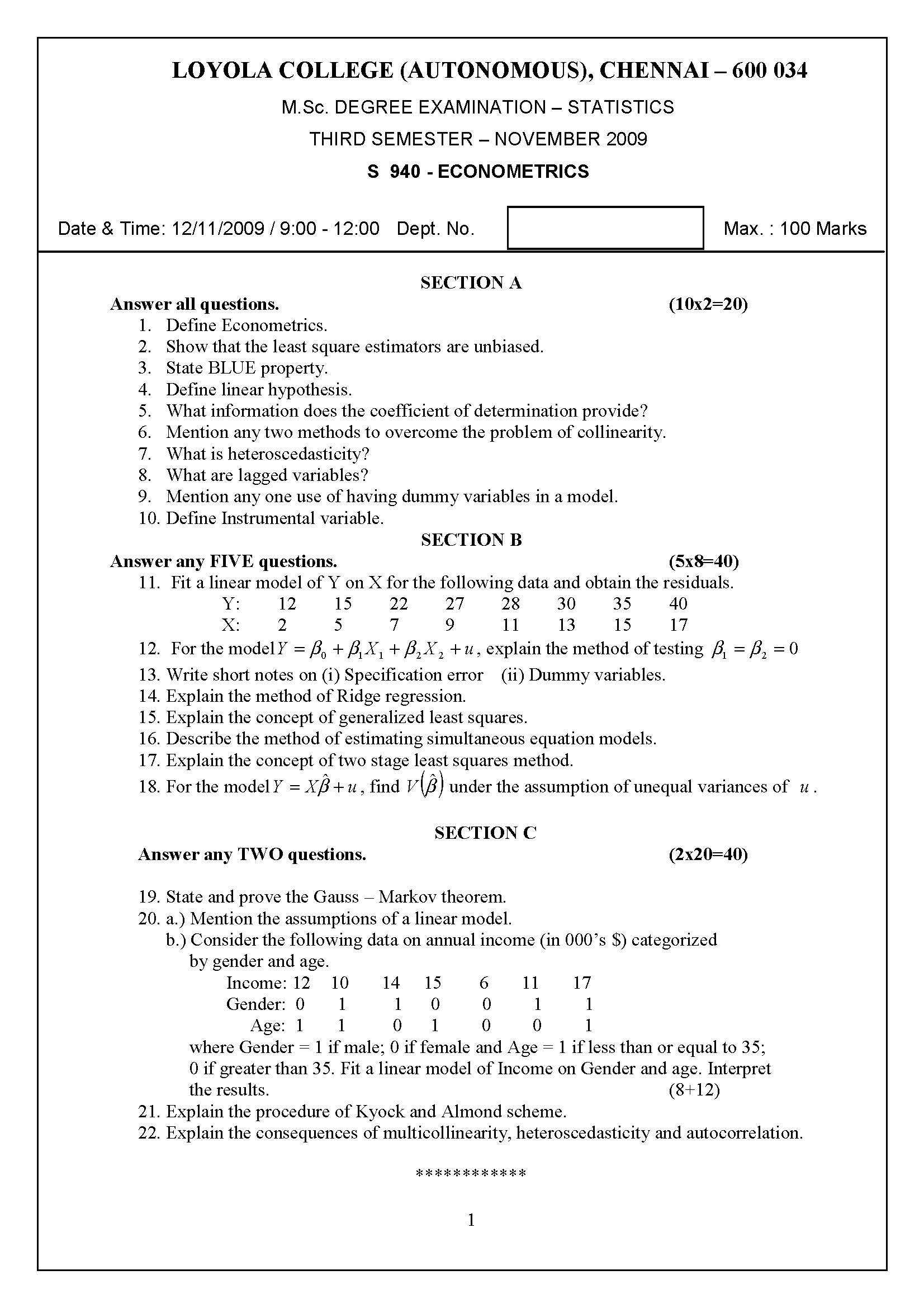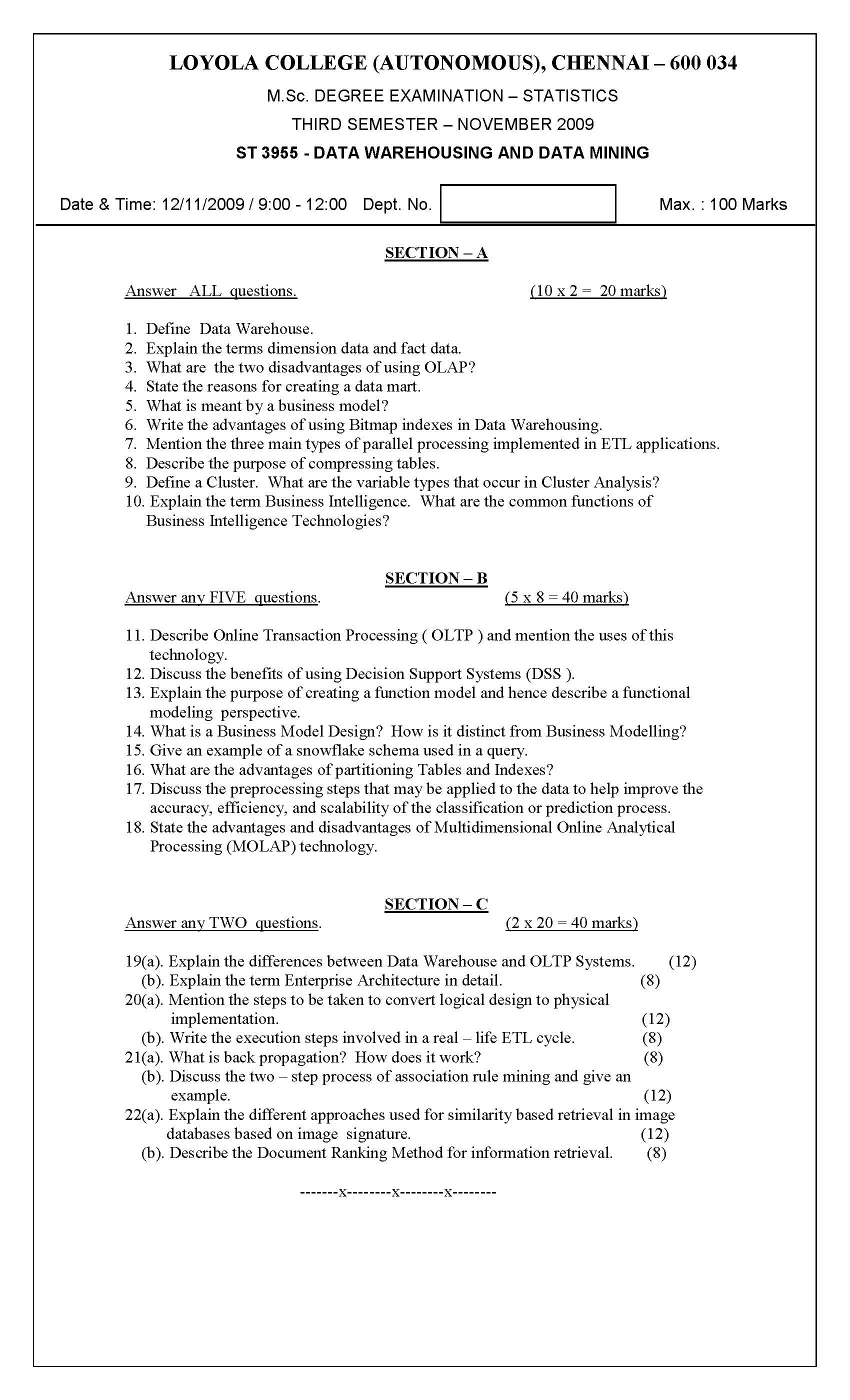LOYOLA COLLEGE (AUTONOMOUS), CHENNAI – 600 034
M.Sc. DEGREE EXAMINATION – STATISTICS
|
FIRST SEMESTER – April 2009
ST 1810 – ADVANCED DISTRIBUTION THEORY
Date & Time: 28/04/2009 / 1:00 – 4:00 Dept. No. Max. : 100 Marks
SECTION – A Answer all the questions (10 x 2 = 20)
- Find the mean of truncated binomial distribution, truncated at 0.
- Show that Posson distribution is a power series distribution
- Define lognormal distribution and show that the square of a lognormal variable is also lognormal.
- Show that the geometric distribution satisfies lack of memory property.
- Find the mean of X1X2 when (X1, X2) has a bivariate Poisson distribution.
- Let (X1, X2) have a bivariate binomial distribution. Find the distribution of X1+X2.
- Define bivariate lack of memory property..
- State the MGF associated with the bivariate normal distribution. Hence find the marginal
distributions.
- Let X1, X2, X3, X4 be independent standard normal variables. Examine whether
2X12 + 5 X22 + X32 +4 X42 – 2 X1X2 + 4 X2X3 + 4 X1X4 is distributed as chi-square.
- Let X be B( 2,q), q = 0.2, 0.3. If q is discrete uniform, find the mean of the compound
distribution.
SECTION – B Answer any five questions (5 x 8 = 40)
- State and establish a characterization of geometric distribution based on order statistics. 12. Find the
conditional distributions associated with trinomial distribution.
- If (X1, X2) is Bivariate Poisson, show that marginal distributions are Poisson.
- Derive the MGF of inverse Gaussian distribution. Hence find the mean and the variance.
- State and establish the relation between the mean, the median and the mode of lognormal
distribution.
- If (X1, X2) is Bivariate exponential, show that min{X1,X2}is exponential
- Find the mean and variance of non-central chi-square distribution.
- Given a random sample from a normal distribution, show that the sample mean and the sample
variance are independent, using the theory of quadratic forms.
SECTION – C Answer any two questions (2 x 20 = 40)
19 a) State and establish the characterization of exponential distribution based on lack of memory
property.
- b) If (X1, X2) is Bivariate normal, state and establish a necessary and sufficient condition for two
linear combinations of X1 and X2 to be independent.
20 a) State and establish the additive property of bivariate Poisson distribution.
- b) State and establish a characterization of Marshall-Olkin bivariate exponential distribution.
21 a) Define non-central t- variable and derive its pdf.
- b) State and establish the additive property of non-central chi-square distribution.
22 a) Let X be distributed as multivariate normal with mean vector µ and the dispersion matrix Σ. Show that
(X – µ )/ Σ -1(X – µ ) is distributed as chi-square.
- b) State and establish Cochran’s theorem on quadratic forms.




